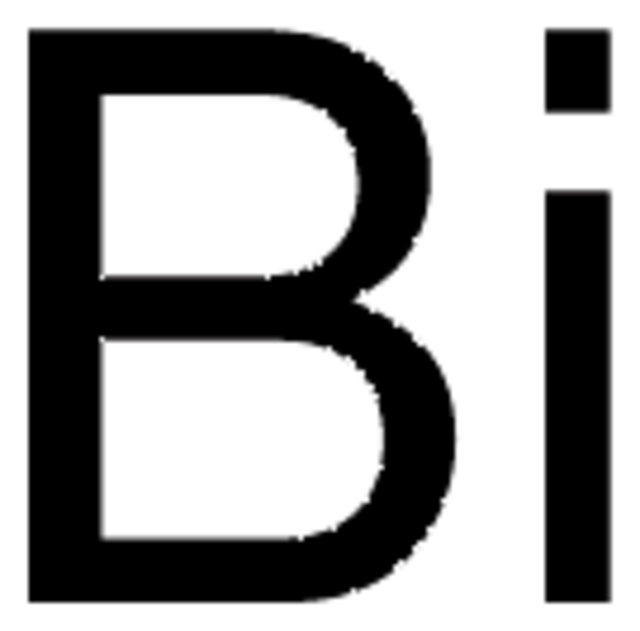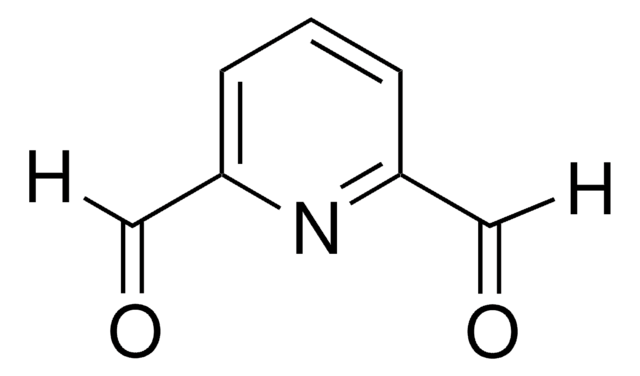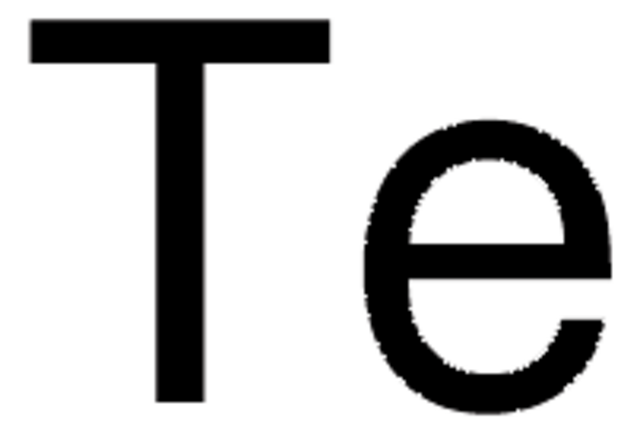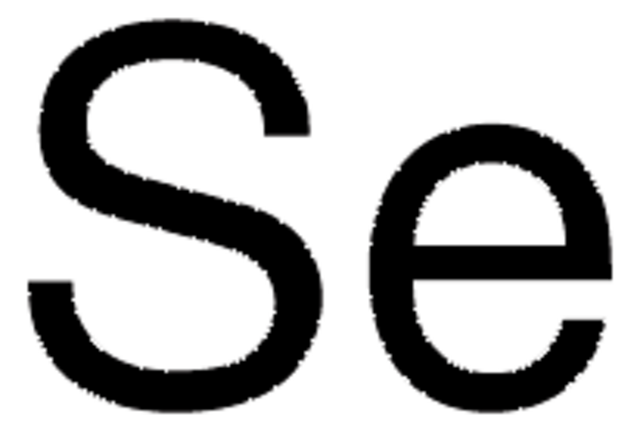264008
Bismuth
powder, −100 mesh, ≥99.99% trace metals basis
Sinonimo/i:
Bismuth element, Bismuth-209
About This Item
Prodotti consigliati
Tensione di vapore
<0.1 mmHg ( 20 °C)
Livello qualitativo
Saggio
≥99.99% trace metals basis
Forma fisica
powder
Resistività
129 μΩ-cm, 20°C
Dimensione particelle
−100 mesh
P. eboll.
1560 °C (lit.)
Punto di fusione
271 °C (lit.)
Densità
9.8 g/mL at 25 °C (lit.)
Stringa SMILE
[Bi]
InChI
1S/Bi
JCXGWMGPZLAOME-UHFFFAOYSA-N
Cerchi prodotti simili? Visita Guida al confronto tra prodotti
Avvertenze
Danger
Indicazioni di pericolo
Consigli di prudenza
Classi di pericolo
Flam. Sol. 1
Codice della classe di stoccaggio
4.1B - Flammable solid hazardous materials
Classe di pericolosità dell'acqua (WGK)
WGK 3
Punto d’infiammabilità (°F)
Not applicable
Punto d’infiammabilità (°C)
Not applicable
Dispositivi di protezione individuale
Eyeshields, Gloves, type N95 (US)
Scegli una delle versioni più recenti:
Possiedi già questo prodotto?
I documenti relativi ai prodotti acquistati recentemente sono disponibili nell’Archivio dei documenti.
I clienti hanno visto anche
Articoli
Permanent magnets are an essential technology for energy conversion. Motors and generators are used to convert energy between electrical and mechanical forms.
Il team dei nostri ricercatori vanta grande esperienza in tutte le aree della ricerca quali Life Science, scienza dei materiali, sintesi chimica, cromatografia, discipline analitiche, ecc..
Contatta l'Assistenza Tecnica.







